Buy Neptunia ReVerse
Hyperdimension Neptunia arrived on the Japanese PS3 in 2010 and a year later everywhere else. It was a pretty rough game, with a flawed battle system and the presentation not up to snuff for the platform, but the characters were likeable and the story's parody trappings were enjoyable. It was liked by Japanese critics and loathed by Western ones, but it did well enough to spawn several sequels and spin-offs. A few years later, the original title was remade as Hyperdimension Neptunia Re;Birth1 for the PS Vita and the PC. A few years after that, it got a PS4 port in Japan only, with one extra character in tow. For the PS5 debut of the franchise, the team at Compile Heart and Idea Factory have remade the remake in the form of Neptunia ReVerse.
The game takes place in the world of Gameindustri, where the four ruling goddesses are engaged in the great Console War. In a battle that has raged for centuries with no clear winner, an outside force convinces the other three goddesses to team up on Neptunia, taking her out of the battle in the heavenly land known as Celestia and sending her plummeting toward her own kingdom with amnesia. Now in her regular and much younger form, she is asked by the watcher Histoire to stop the menace known as Arfoire while she tries to get her memories back.
From beginning to end, the seemingly by-the-book plot is peppered with heavy doses of humor and references to the worlds of gaming and anime. The parody names of the goddesses all refer to the consoles of the previous generation and a canceled Sega console. Arfoire is a not-so-sly reference to the popular Nintendo DS flash cart, while your companions Compa and IF reference two of the studios that created the game. The game talks about how getting naked means being able to transform into a magical girl and how carrying around large weapons is both normal and alarming. The fourth wall is often broken to make self-referential jokes, such as how the storyline has changed since this is a remake and how getting captured and taken off-screen by a monster implies that lewd things are happening. Aside from the references are straight-up cameos by characters like the Pac-Man ghosts and the naming of characters after other companies, like Falcom, CyberConnect2, and Broccoli.
The original title did all of these things, but the approach here is less heavy-handed. The writing is much better this time around, and while some jokes can last longer than they should, most of the jokes come through briskly, leading to laughs instead of groans. The overt sexuality of the first game has also been toned down. There are less sexually suggestive noises and poses than before to maintain the balance between titillating and creepy, since most of the characters appear to be quite young.
A good chunk of the game is presented in visual novel format, where up to two large portraits appear on-screen while a text box indicates who's speaking. The pictures don't do natural transitions between actions and emotions, but they aren't static, either, as their mouths move and they have a slight breathing effect. There are no gameplay ramifications to these story bits, so if you're in it for the gameplay, you can fast-forward through the scenes or skip them with a button press, something new to this remake.
The gameplay matches up with the Vita and PC iterations almost perfectly. The overworld setting is a map of all of Gameindustri, and the four kingdoms are separated into their own floating islands. You don't walk from location to location, but you move your party marker from each place of interest, occasionally going over some randomly marked spots to see a random character or gain an item. In towns, you're greeted with a menu system for everything from shops to item crafting to guilds, where you pick up bonus quests for more items and cash. You'll also access important story events at those given times. For anything else that isn't a town, clicking on the markers leads to the dungeon portion of the game. The overworld is also where you'll gain the ability to remix dungeons for different enemies and loot if you want to do some grinding in familiar places with new results.
The dungeon segments are slightly different from a typical JRPG. You're given a decently sized area in full 3D to explore, and floating question marks represent treasure chests to pick up items. Your scanner lets you send a ping to uncover hidden treasure, and you can jump to reach lower or elevated floors. Saving is limited to specific spots in dungeons, but that mechanic can be done in the overhead map. Enemies require you to make contact with them instead of dealing with the random encounters of most JRPGs. Touching them puts you both on even ground in terms of who attacks first, but you can gain an advantage if you strike before contact is made. Likewise, enemies can gain the advantage if they notice you and give chase before making contact.
Combat is a turn-based affair with a twist. Each player is given a circle that they can move around, along with a hit area placed directly in front of them, which varies in size depending on the character and weapon used. Attacks don't produce one hit, as they start up combos, giving you the ability to unleash four basic attacks of varying strength and focus (HP over guard points, for example) each time. Magic and items, on the other hand, ignore the attack square in favor of a circle of influence emanating from the player, giving them a wide target range while letting them keep their distance.
The issue of distance becomes important in battle because it plays a big role in attacks, but it's a nice change from the traditional model of JRPG battles. Group enemies together into a spot where they reach your attack area, and you're suddenly wiping out multiple enemies at once. Likewise, if you keep your party grouped together, all it would take is one wide-reaching attack to waste everyone's health. The movement system isn't deep enough to let you do hit-and-run attacks, so unless you're always playing defense, you're going to get hit when you decide to attack.
There are lots of other things in the battle system that add some depth to Neptunia ReVerse. Your combo system can be modified, so you won't see the same three moves each time you fight. Different moves are unlocked as you level up, and your only restriction is from the combo points to allocate and replace moves in their given squares. As you fight, you build up an EX gauge, which can unleash a powerful move that drains the bar or opens up finishing attacks to give you an extra attack in the chain that doesn't use the meter.
Like everything else, the overall gauge increases as you level up, which gives you access to more powerful moves. You can create discs that give your characters extra passive abilities, and every goddess in your party has access to an HDD mode that transforms them from their adolescent state to a more powerful goddess state. Then there's the Lily system, which lets you have a backup character for each member of the party. Not only can you use this to switch out members in a fight, but you can also give the active members extra abilities depending on their friendship with each other, which can be built up by having them partner up over multiple battles. Another thing that works to your benefit is the fact that everyone in your group levels up regardless of whether they were involved in the battle. Considering the number of people you can get throughout the game, that does a great job of reducing the grinding.
For the most part, anyone who has played the Vita or PC version knows what to expect from this iteration. If you're looking for gameplay differences aside from the nonexistent load times, there are only three major ones, and your feelings on them will vary. Aside from the fact that all of the previously released DLC is now built into the game, the first difference is the inclusion of Neptunia Shooter. Once a PC exclusive, the game is available as free DLC that can only be accessed via the game. The game is a decent bullet hell shooter, but it's bare-bones since there's been minimal effort given to backgrounds, enemy types, and sounds.
The second addition is fishing, and it feels like more than just a curio since this is the lone section of the game that takes advantage of some of the DualSense's traits. Once you reach a fishing spot, you move to where you want to cast, confirm it with the X button, and flick the controller down to throw out your line. When you get a bite, you fight the tension on the R2 trigger until you deplete the fish of energy, and you flick the controller up to reel in the fish. Continuing with the game's parody roots, some of the fish look like cute versions of old consoles. Other things you can reel in are books that contain the cut scene dialogue from the original game, but it can be harder to follow since the actual cut scenes aren't playing. Fail to catch a fish, and you enter a boss fight, which is challenging but a quick and dangerous way to grind out XP.
The final major addition is Arrange mode, which can be considered transformative enough that the game warns it should only be used for those who know the Vita/PC version front to back. Playing in this mode gives you a few tweaks to XP, but the biggest addition is in having all 27 characters from the get-go. In a way, this fixes one of the complaints about the original title, where you're introduced to some big mechanics but can't use them due to the lack of people in your party.
If you care about narrative, this mode doesn't update the plot to accommodate the changes that it brings about. If you're looking for balance, that's also broken since the game doesn't take into account that you have so many characters and moves in your arsenal that early. The tail end is challenging enough that you'll need to power up everyone, but most of the game feels like a cakewalk since you have more people and their respective transformations. Some boss fights become short enough that it's rare to see them attack. In a way, giving this much power to the player this early on backfires, since it amplifies the uneven difficulty throughout the journey.
While the overall audio remains unchanged, the graphics got a slight upgrade, as the heroes all get newer, more detailed models. The other noticeable change isn't necessarily a positive one, as the game suffers from aggressive bloom that crushes all of the newfound detail in stages that are set during daylight hours. Other than that, everything else remains the same. Expect some decent animations with slightly awkward transitions and textures that are good but don't take advantage of the platform's graphical horsepower. The only other weakness comes from the brief full-motion video sections, which seem upscaled enough from the Vita source that they appear slightly blurry.
For newcomers to the series, Neptunia ReVerse isn't a bad starting point. The story is breezy and the overall gameplay is good, even if you have to deal with uneven difficulty. For veterans, the new fishing minigame is cute, but Arrange mode throws off the balance and isn't much of an incentive to return to the game. Overall, it isn't a bad PS5-exclusive RPG, but you might want to wait for the team to develop something new for the platform.
Score: 7.0/10
More articles about Neptunia ReVerse


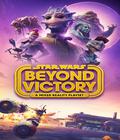

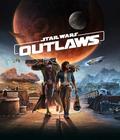
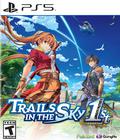

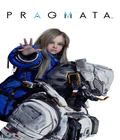
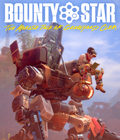
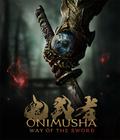

 Neptunia ReVerse is an updated and enhanced version of the PlayStation Vita RPG game Hyperdimension Neptunia Re;Birth1.
Neptunia ReVerse is an updated and enhanced version of the PlayStation Vita RPG game Hyperdimension Neptunia Re;Birth1.










